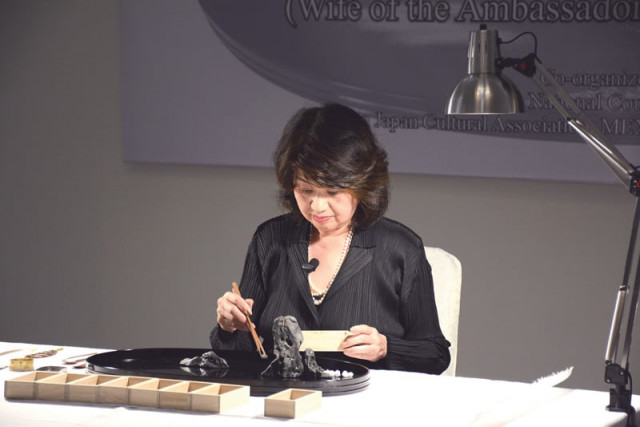Cultural exchange: Bonseki makes way to the capital
Midori Inomata vows to change perception about the intricate craft.

Japanese Ambassador Hiroshi Inomata spoke about the ancient Japanese art at the event, organised by the Japanese embassy in collaboration with the Pakistan National Council of the Arts, Pakistan-Japan Cultural Association and MEXT Alumni Association of Pakistan.
Speaking to the participants, Inomata said that he was “aware that a general perception among the Pakistani people about Japan is of its rapid progress in technological inventions and well-crafted animations. However, after witnessing today’s demonstration, I hope you will also see a different aspect of Japan; its traditional art and beauty”.
Midori Inomata, the ambassador’s wife, demonstrated the intricate craft. A short film, showcasing Japan’s landscape, profiled a seasoned artist preparing the art pieces from scratch. The monochromatic film accentuated the black-and-white, almost rustic feel of the actual art pieces.
Bonseki is a traditional Japanese art form that portrays the four scenes in a miniature by placing natural stones on black lacquer trays with various sizes and amounts of white sand used to add dimension. Bonseki was particularly popular in Japan during the Edo era from 1603 to 1867.
Bonseki scenes often depict mountains, such as Mount Fuji, rivers, lakes, waterfalls, seashores, and gardens. Small stones are used to represent mountains, shore lines or rocky islands that waves break upon. Miniature structures, usually of painted copper, are sometimes added to the work to make houses, temples, bridges, and the like.
The art form involves using small tools such as feathers, small flat brooms, sifters, spoons and wood wedges. A typical Bonseki landscape features rivers, lakes, mountains and waterfalls. A scene may take about two hours or more to create, while a quick demonstration takes as little as 20 minutes.
In the Edo era, Bonseki and other arts such as Sado (tea ceremony), Kado (flower arrangement) and Kodo (listening to incense), were popular among different strata of society.
Published in The Express Tribune, October 15th, 2014.



















COMMENTS
Comments are moderated and generally will be posted if they are on-topic and not abusive.
For more information, please see our Comments FAQ